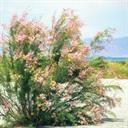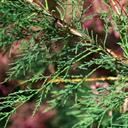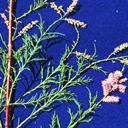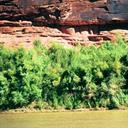Tamarisk (Saltcedar)
Information
Tamarix racimossima - Tamaricaceae Family - Perennial shrub
Other common name: Saltcedar
Identification
- Flowers: Large sprays of small whitish or pinkish flowers that are born in finger-like clusters.
- Leaves: Leaves are very small and scaly and arranged alternatively.
- Seeds: Reproduces by seeds as well as vegetatively. A mature tamarisk plant can produce 600,000 seeds annually. Seeds are viable for up to 45 days.
- Flowering Time: April – August of its third year of growth.
- Life cycle/ other: Perennial. Grows into tall shrub or small tree.
Impacts
- Tamarisk is an aggressive, woody, invasive plant species that crowds out native stands of riparian and wetland vegetation.
- It increases the salinity of surface soil, rendering the soil inhospitable to native plant species and generally lowers the wildlife habitat value.
- It uses more water than comparable native plant communities and dries up springs and wetlands.
Control
Most effective control methods
- For large, essentially monotypic stands of saltcedar, the best method of control is a foliar application of imazapyr (Arsenal) herbicide. Do not disturb the plant for 2 years for full translocation of the herbicide into the roots.
- For smaller infestations, cut tamarisk stems off at ground level (within 2 inches of the soil surface) and immediately paint the cut surface with triclopyr or imazapyr. Fall applications are most effective. Resprouts should be treated 4-12 months following the initial treatment.
- The recent introduction of a biological control, the saltcedar leaf beetle (Diorhabda elongata) in Delta Utah, has shown very promising through rapid expansion and almost complete defoliation. Repeated defoliation by the leaf beetle after several years has resulted in tamarisk death.
- If no native vegetation exists within the area, restoration with natives is imperative to long-term management.
Control methods and timing
| March | April | May | June | July | Aug | Sept | Oct |
|---|---|---|---|---|---|---|---|
|
Prev Cult |
Prev Cult |
Cult |
Cult |
Cult |
Chem Cult |
Chem Cult |
Prevention (Prev) Monitor and destroy new plants before seed production.
Mechanical (Mech) Hand pulling, digging, cutting, mowing and tilling.
Cultural (Cult) Biological control agents, livestock grazing, and revegetation practices.
Chemical (Chem) Selective herbicides based on the plant and the specific location. Check our weed fact sheets for specific control information.
Large Images
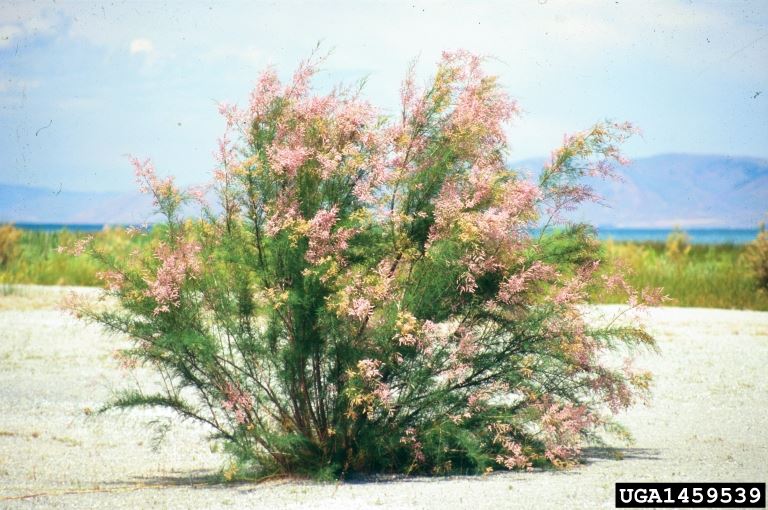
Tamarisk in bloom
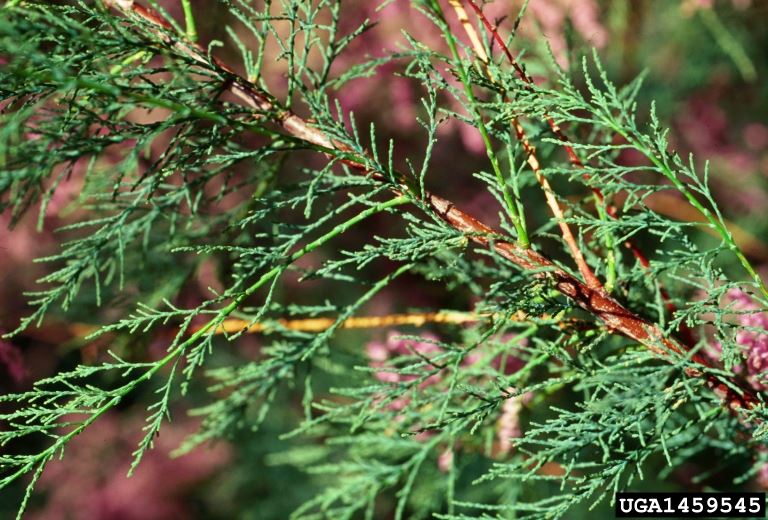
Tamarisk: foliage

Tamarisk: stem, foliage, and flower
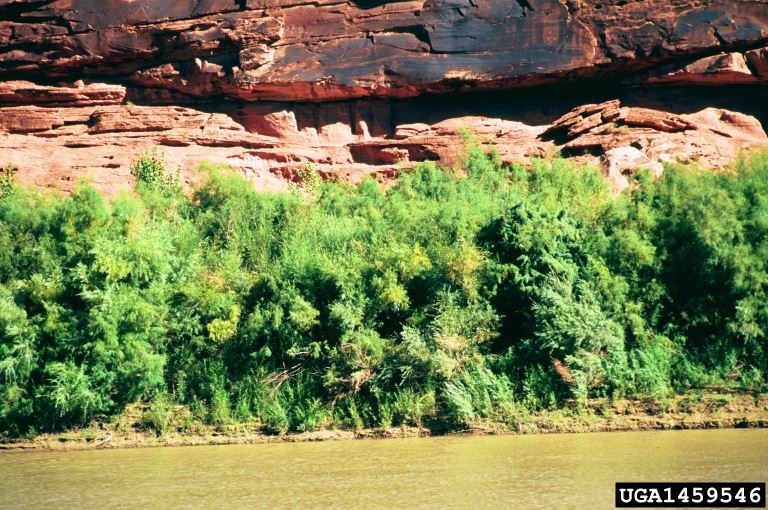
Tamarisk: infestation
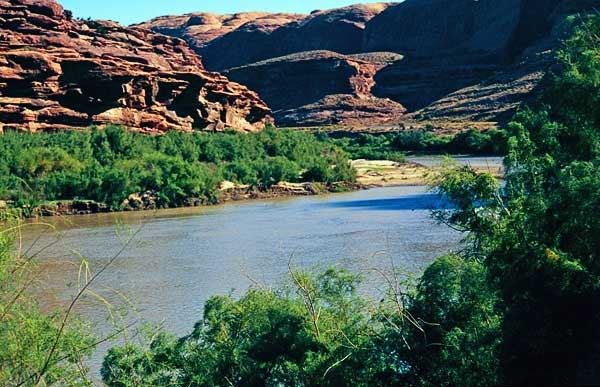
Tamarisk: infestation
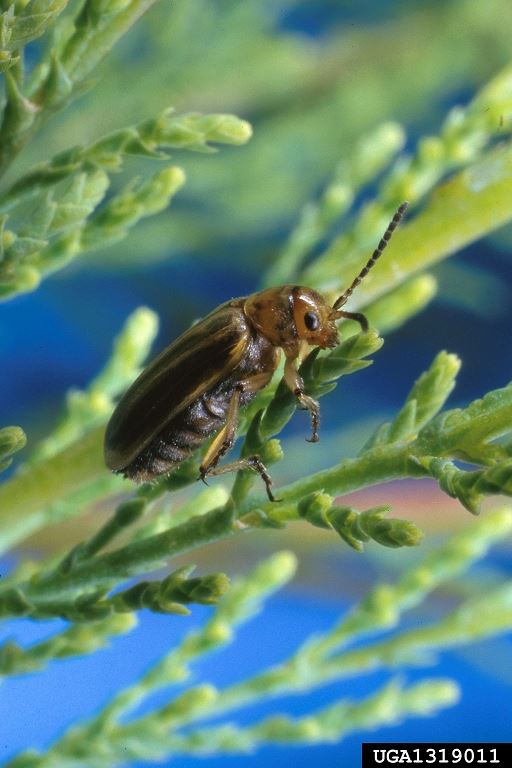
Mediterranean tamarisk beetle, used for biocontrol
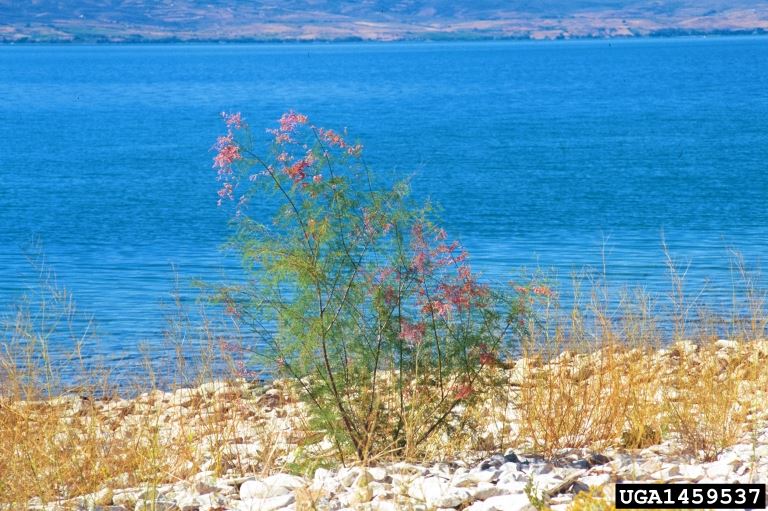
Tamarisk on Bear Lake, Utah
Resources
-
-
References
DiTomaso, J.M., G.B. Kyser et al. (2013). Weed Control in Natural Areas in the Western United States [PDF file]. Weed Research and Information Center, University of California. Retrieved from http://wric.ucdavis.edu/information/natural-areas/wr_T/Tamarix.pdf View PDF
Duncan, C. (2018, February 23). Saltcedar and Russian olive management. Retrieved from https://www.techlinenews.com/articles/2012/12/30/saltcedar-and-russian-olive-management
Grubb, R., Sheley, R., & Carlstrom, R. (2017, December). Saltcedar (tamarisk) [PDF file]. Retrieved from http://msuextension.org/publications/AgandNaturalResources/MT199710AG.pdf View PDF
Knutson, A., Muegge, M., & DeLoach, C.J. (2011, July). Biological control of saltcedar [PDF file]. Retrieved from http://lubbock.tamu.edu/files/2015/06/Biological_Control_of_Saltcedar.pdf View PDF
United States Department of Agriculture. (2010, January). Field guide for managing saltcedar [PDF file]. Retrieved from https://www.fs.usda.gov/Internet/FSE_DOCUMENTS/stelprdb5180537.pdf View PDF
Wyman, S. (2007, December 12). Saltcedar (tamarix) [PDF file]. Retrieved from https://www.blm.gov/or/programs/nrst/files/tamarisk_paper.pdf View PDF
